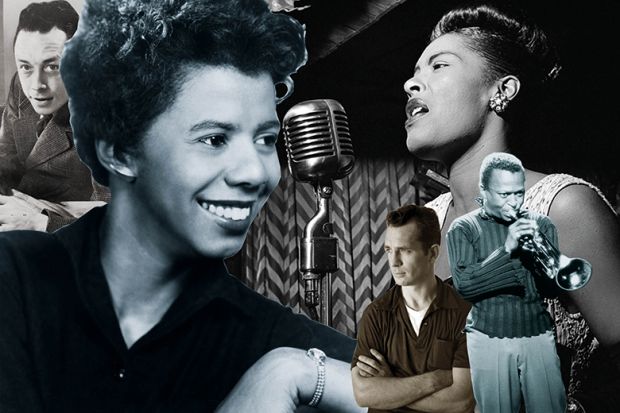When I was a teenager I wanted to be cool (who am I kidding? I uncoolly still want to be cool). But if you had told me that cool was “an emergent structure of feeling in postwar America”, as Joel Dinerstein beautifully demonstrates in this superb book, would I have been so keen?
What made cool cool, Dinerstein argues, is the braiding together of jazz, film noir and existential literature; the first as an African American mask of cool (poise, virtuosity and “a blank facial wall, suggesting both a resistance to white social norms and an inner complexity”); the second, a delayed working-class response to the Great Depression (gritty but righteous loners in an unjust world); the third, an ethical expression of “rebellion-for-others” in 1945, “year zero” Europe after collaboration, genocide and atomic destruction. Cool contains and enacts “truths we don’t know we know”.
Despite laying out some principles (“cool is…”), the book focuses on honed case studies of “the saints of cool” (as Hannah Arendt argues, we learn more from examples than from principles). Beginning with Lester (“Prez”) Young, it moves on to (drawing a long, uncool breath...) Humphrey Bogart, Albert Camus, Billie Holiday, Simone de Beauvoir, Jack Kerouac, Frank Sinatra, Sonny Rollins, Miles Davis, Lorraine Hansberry and Marlon Brando, with many others in lesser roles (but, man, as the author points out, hero worship is “so uncool”). What gives the book its real flavour is Dinerstein’s understanding of how these roles and characters were interwoven across racial divides, across the Atlantic, over time: Camus-as-Bogart; Eastwood-as-Prez; de Beauvoir learning from Sidney Bechet, Richard Wright and Nelson Algren.
Dinerstein also traces how early post-war cool (“the public face of survival”) turned, by the late 1950s, to mean something like “generational desire”. In place of control comes the expression of emotion and spontaneity: Brando, James Dean, Elvis (“Just what is it that you want to do? We wanna get loaded and have a good time. We wanna have a party. Yeah!”).
Where is cool now? While it’s commodified and depoliticised as “an outlaw sensibility for a consumer society”, Dinerstein argues that cool constantly reinvents itself, both as “the password to an American mythos” and as a marker for “iconic rebels”: it’s a “subconscious method for negotiating identity in modernity through popular culture”.
This accessible, historical and personable book comes, despite its long gestation, at an interesting time in American literary and cultural criticism. To simplify, critics such as Rita Felski suggest that “critique” has run its course: one-sided, overly politicised, “whatever it is I’m against it”, unloving and suspicious of art. Yet this riveting book, perhaps oddly, shares much with the high theory of Sianne Ngai (Ugly Feelings, Our Aesthetic Categories: Zany, Cute, Interesting) and the explicitly political work of Lauren Berlant (Cruel Optimism). They all demonstrate an interest in how the inchoate and changing “structures of feeling” – a phrase from the Welsh Marxist critic Raymond Williams – appear in the present, and how these shape us, our thinking and our engagements with the world: an interest that stems from the idea of critique. These books – and especially Dinerstein’s – are clearly both enamoured with their subject matter and also political, open-eyed and thoughtful. And, while being a literary critic is almost certainly a guarantee of being square (thus, the end of my teenage dreams), that is still pretty cool.
Robert Eaglestone is professor of contemporary literature and thought, Royal Holloway, University of London.
The Origins of Cool in Postwar America
By Joel Dinerstein
University of Chicago Press, 352pp, £30.00 and £20.40
ISBN 9780226152653 and 6453439 (e-book)
Published 12 June 2017
后记
Print headline: Where is hip happening now?




